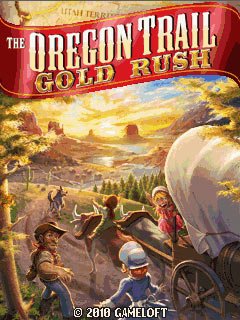

However, the article received little attention until the paper's publisher, Samuel Brannan walked down the streets of San Francisco, waving a bottle of gold in the air and shouting "Gold! Gold! Gold from the American River!" (Dary 2004:188). The first printed notice of the discovery was made in the Californian on March 15, 1848.

Sutter and Marshall tried to keep the discovery quiet, but the news leaked out within weeks of the discovery (National Park Service). To his surprise, Marshall discovered a gold nugget on January 24, 1848, while at the saw mill. Marshall chose a location on the south fork of the American River, only 40 miles from Sutter's home. In 1848, Sutter assigned James Marshall to build a saw mill. John Sutter, a Swiss businessman, immigrated to California in 1839 to become an agricultural success. Governor Pico had no idea of the hordes of gold-seekers that would yet flood into California in the ensuing years. What that astonishing people will next undertake, I cannot say" (Ward 88). Already have the wagons of that perfidious people scaled the almost inaccessible summits of the Sierra Nevada, crossed the entire continent and penetrated the fruitful valley of the Sacramento. In 1845, California's governor, Pio Pico, stated, "We find ourselves threatened by hordes of Yankee emigrants. Despite the tragic episode of the Donner-Reed Party, approximately 1,400 emigrants successfully arrived in California in 1846 (Dary 2004:167). A rescue party did not reach the survivors until the spring of 1847 (National Park Service). Forty of the eighty-seven settlers died that winter due to the extreme cold and starvation. After eating all of the livestock and hides by mid-December, some resorted to eating the deceased. The settlers were trapped in mountains for four months. The wearied Donner-Reed Party reached the Sierra Nevada's in October, just in time for the first severe snowfall of the year. Hastings' haphazard cutoff cost the settlers more time, livestock, supplies, and lives than popular routes would have taken.

The group, having started west late in the year, were enticed by Lansford Hastings to take an alternate and supposedly more timely route to California. The Donner-Reed Party was one such group who traveled from Illinois Apwith 87 travelers en route to California. The Gold Rush didn’t end in 1849 and the following year another 55,000 migrated to California and 50,000 more came in 1852.īy the 1860s when interest waned due to Indian scares, over 300,000 had moved west.The California Trail is most notably associated with the goldrush of 1949, however, many pioneers traveled to California before the rush. By the end of 1849 over 25,000 more people traveled the trail and arrived in California. The discovery of gold in California 1848 dramatically changed the character and experience of travelling the trail.Men dropped everything in a rush to get to California. They were also a religious people, most were Protestant. After selling their farms, machinery, draft animals and house-hold goods most had a sizable amount of cash in invest in their trip and to settle on new land. Who were the people that dared to leave home and hearth and venture into the wilderness? Most were farmers a few were artisans. After the Mexican War was over in 1847, an other 4,000 ventured west on the trail. Two years later, 875 farmers went to Oregon while 38 split at Soda Springs and followed the new California Trail to California. This was the beginning of the Great Migration. This first group established what would become the Oregon and the California trails. Hall and across southern Idaho to Oregon, while the smaller half followed the Bear River, crossed the Great Salt Lake Desert and over the Sierra Nevada Mountains to become the first emigrants to follow a land route to California. Near Soda Springs, half of the party continued to Ft. It began in 1841 as a small, lonely caravan of only 58 people in the Bidwell/Bartleson company followed the trail. Today, you could make the same trip by car in four days or by jet in four hours.Īt first the emigrant flood was a trickle. The trek was a difficult journey and took five months to travel the 2,000 miles by ox-drawn wagon. During the nineteenth century, over 200,000 men, women and children traveled the Oregon and California Trails in search of new homes in the west.


 0 kommentar(er)
0 kommentar(er)
